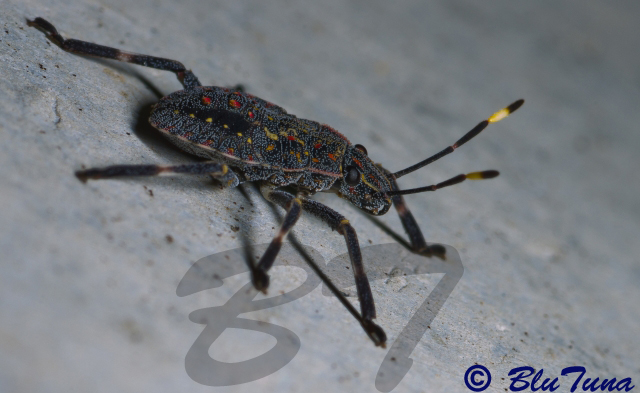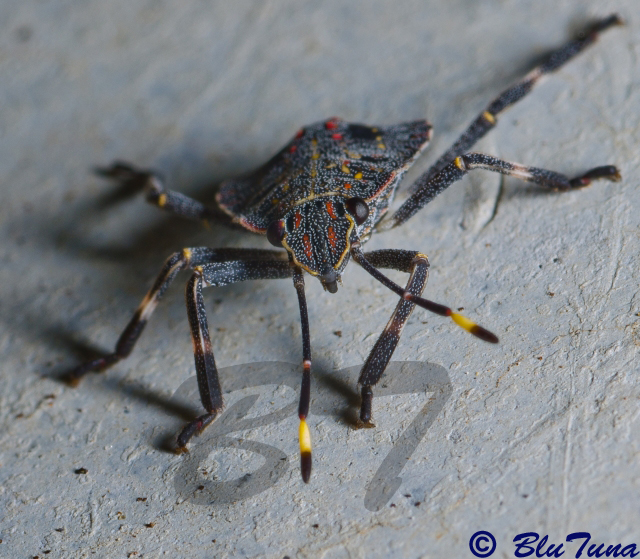Re: AW Insect Book: Hemiptera, Heteroptera, Miridae
Posted: Mon Dec 21, 2020 7:32 pm
Plant Bug
Superfamily Miroidea. Family Miridae.
 © BluTuna
© BluTuna
Garden in Johannesburg
The Miridae are one of the largest groups of Heteroptera (Hemiptera). With more than 11,100 described species worldwide, this family contains major plant pests, that pierce plant tissues, feed on the sap, and sometimes transmit viral plant diseases. Some species however, are predatory.
Diagnosis
Body elongate ovate to short and ovate; body size 1 to 15 mm, mostly 3 to 6 mm.
Head triangular; clypeus usually more‑or‑less vertical; eyes usually large; ocelli absent (except subfamily Isometopinae). Antennae with
four segments, segments 3 and 4 usually only slightly smaller in diameter than segment 2; labium with four segments, sometimes with subdivisions in Cylapinae, usually long and tapering, diameter of segment 1 greatest.
Many mirids have a hunched look, because of the shape of the prothorax, which carries the head bent down.
One useful ID feature is the presence of a cuneus; it is the triangular tip of the corium, the firm, horny part of the forewing, the hemelytron. The cuneus is visible in nearly all Miridae.
The tarsi almost always have three segments.
Superfamily Miroidea. Family Miridae.
 © BluTuna
© BluTunaGarden in Johannesburg
The Miridae are one of the largest groups of Heteroptera (Hemiptera). With more than 11,100 described species worldwide, this family contains major plant pests, that pierce plant tissues, feed on the sap, and sometimes transmit viral plant diseases. Some species however, are predatory.
Diagnosis
Body elongate ovate to short and ovate; body size 1 to 15 mm, mostly 3 to 6 mm.
Head triangular; clypeus usually more‑or‑less vertical; eyes usually large; ocelli absent (except subfamily Isometopinae). Antennae with
four segments, segments 3 and 4 usually only slightly smaller in diameter than segment 2; labium with four segments, sometimes with subdivisions in Cylapinae, usually long and tapering, diameter of segment 1 greatest.
Many mirids have a hunched look, because of the shape of the prothorax, which carries the head bent down.
One useful ID feature is the presence of a cuneus; it is the triangular tip of the corium, the firm, horny part of the forewing, the hemelytron. The cuneus is visible in nearly all Miridae.
The tarsi almost always have three segments.

